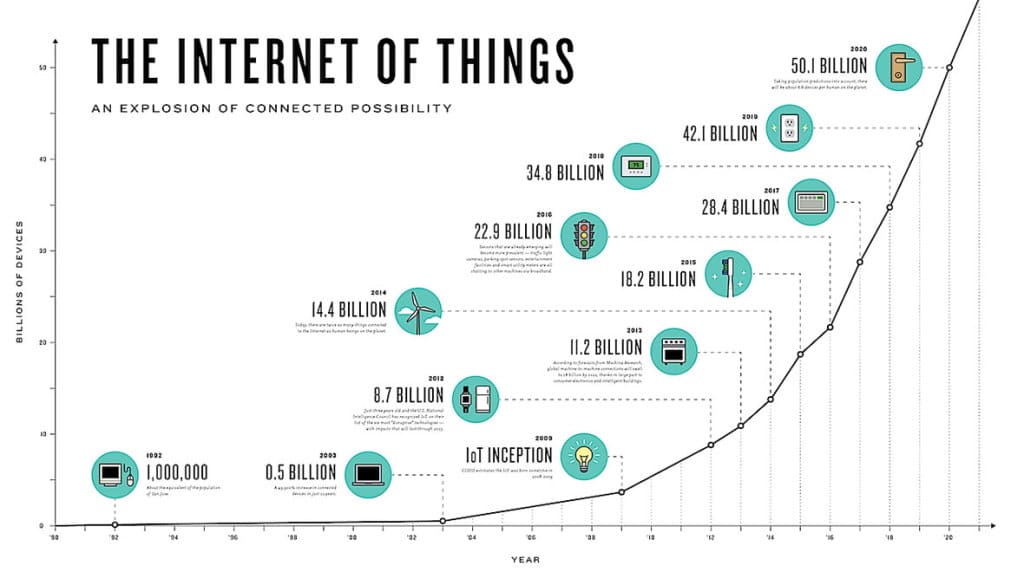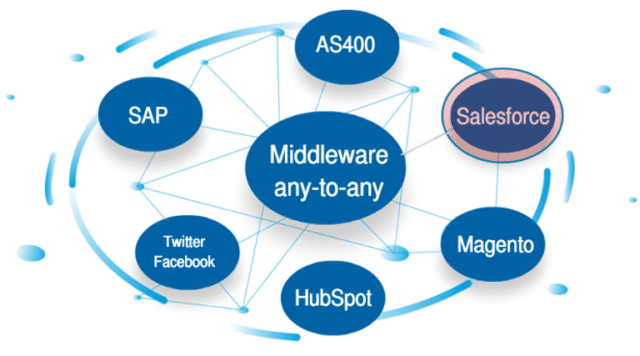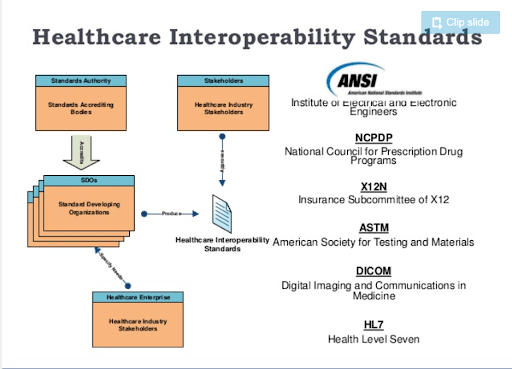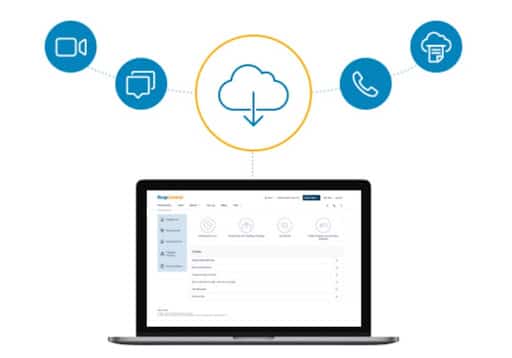Data exchange between IT systems, databases and applications is crucial for technology – for example, the IoT – to grow. For this data exchange to take place, we need interoperability.
What is interoperability?
Interoperability is the ability of equipment, systems, apps or products from different vendors to operate together in a coordinated way, without an end user’s involvement. It facilitates unrestricted sharing and data and resources between systems via local area networks (LANs) or wide area networks (WANs).
Interoperability is similar in certain ways to compatibility. It enables organisations to achieve better efficiencies and performance—all whilst providing them with a more holistic view of all their information. Interoperability can apply to all kinds of information sharing but has become of particular significance in the healthcare industry, which currently suffers from a lack of interoperability.
Most healthcare economies are putting interoperability high on their political agendas – including the UK.

How does interoperability work?
For two or more systems to be interoperable, they must be capable of exchanging, interpreting and presenting shared data so that each is understood by the other. To achieve this, ‘syntactic’ interoperability must be established. This requires the adoption of common data format and data structure protocols. It’s then followed by ‘semantic’ interoperability, which requires metadata to link each data element to a controlled, shared vocabulary.
This shared vocabulary contains associated links to an ontology – a data model representing a set of concepts within a domain – along with relationships amongst those concepts.
By adopting these common standards, it’s possible to transmit meaningful information independent of any information system.
Integration vs interoperability
Integration and interoperability both involve the connection of applications and the facilitation of data transmission. However, there’s a difference in how the two systems communicate:
Interoperability is the real-time data exchange between different systems communicating in the same language. Incoming data is instantly interpreted and presented in the same state it is received, preserving the original context.
Integration, on the other hand, is the process of combining multiple applications, so they function as one uninterrupted system, which usually involves the use of middleware. Integration facilitates the interaction of products talking to each other in their current state while maintaining compatibility with future versions of themselves.

In contrast, interoperable systems lose their interoperability when there is a system update or change.
Compatibility vs interoperability
Compatibility involves two or more applications within the same environment interacting while independently performing tasks without causing interference with another app or system.
Compatibility differs from interoperability as the two apps or systems are not required to communicate with one another. They are resident in the same location.
Interoperability involves the interaction of two different systems or apps which are in dissimilar environments.
Different levels of interoperability
Interconnected systems vary in their levels of interoperability, as follows:
- Foundational (level 1). This level allows for data exchange from one IT system to be received by another. It doesn’t require the receiving information technology system to be able to interpret the data.
- Structural (level 2). This is an intermediate level that establishes the structure or data exchange format to enable uniform movement of data from one system to another. That means the purpose and meaning of the data are preserved without being altered. Structural interoperability defines the ‘syntax’ functionality of the data sharing, ensuring data between IT systems can be interpreted at the field level.
- Semantic (level 3). This level of interoperability enables two or more IT systems or elements to exchange information and make use of that information. Semantic interoperability involves structuring the data exchange and codifying data (using vocabulary) to ensure the receiving computer systems can interpret the data.
- Organisational (level 4). This is a level of interoperability that considers governance, policy, social, legal and organisational considerations. These aspects are necessary to secure seamless, timely communication both within and between organisations, individuals, and entities and encourage trust in integrated processes and workflows.
Interoperability standards
There are numerous standardisations used to provide a common framework and set of expectations around health information exchanges (HIEs). Many standards relate specifically to the healthcare industry, which has over forty different standards. These are set by standards development organisations (SDOs).
There are various types of interoperability standards available, many aimed at developing the adoption of open source agreements involving many stakeholders and subject matter experts, such as clinicians.

The Fast Healthcare Interoperability Resources (FHIR) is a global standard for passing healthcare information between systems. The European Commission has also introduced common standards to enhance the interoperability of health information technology among member states. Similarly, in the United States, the American National Standards Institute (ANSI) is a recognised SDO and can create recognised standards.
Standards are generally divided into the following categories:
-
Vocabulary standards
These address the ability to represent unambiguous concepts between senders and receivers of information. This is a fundamental requirement – especially for healthcare providers – that need to communicate via structured vocabularies, code sets, terminologies and classification systems around large numbers of health concepts.
-
Content standards
Content standards refer to the data contained within information exchanges. They define the structure and organisation of an electronic message or a document’s content.
-
Transport standards
These standards are involved in messages exchanged between different systems, document architectures, clinical templates, user interfaces and patient data. They support things like medical devices and consumer-facing apps to enable the scaling of interoperability within the ever-increasing health ecosystem.
-
Privacy and security standards
These address individual and organisational privacy and determine – as a use case – how patient information is collected, accessed and used. In Europe, the General Data Protection Regulation (GDPR) outlines the privacy and security regulations for processing and storing personal data within the EU.
-
Identifier standards
Identifier standards are used to uniquely identify patients and providers, including specific code used to document patient data and information.
Benefits of interoperability
Organisations that apply technologies to facilitate the synchronisation and communication of systems experience many benefits.
Some of the chief benefits of interoperability include:
- Increased productivity. With the time required to process data reduced, organisational efficiencies increase. When staff work with digital documents via APIs, time is reduced in fixing and updating things like electronic medical records.
- Reduced costs. Since fewer resources or additional maintenance is required.
- Reduced errors. Information systems that operate in isolation are more likely to hold redundant information. As data systems are synchronised, the quality of data is improved, and more sources can be brought together, creating more cohesive information.
- Better data protection. For example, within the healthcare industry, keeping public health data protected is a top priority, and interoperability helps keep patients’ information safe. Rather than type inpatient data many times, it can be accessed from their electronic health records (EHRs).
Importance of interoperability by industry:
-
Health
Within the healthcare system, interoperability is driving the standardisation and quality of medical care. In hospitals and labs, new technologies and devices are constantly being adopted – all driven by sophisticated software that needs to integrate at the point of care and electronic systems, e.g. electronic records.
-
Telecommunication
Interoperability enables different services to operate efficiently and accept services from different systems. The components of telecommunication interoperability include signal availability, network scale, frequencies and equipment. For example, the successful communication of two-way radios requires interoperability.
-
Software
In terms of software, interoperability is important in ensuring that multiple programmes can exchange information, share files, and use the same protocols. Javascript, for example, is considered to be highly interoperable as a programming language since it’s able to run and execute code on any Java-equipped virtual machine.
-
Safety
Interoperability aids the police, fire service, EMS, and first responders to communicate effectively between different agencies, especially during large-scale emergencies.
-
Government
Challenges due to language barriers and different specifications can cause difficulties between government organisations in countries worldwide. Interoperability helps to reduce these barriers and enable public administrations to communicate effectively.

Is RingCentral offering data integration solutions?
The ability of big data and systems to connect and work together is essential as organisations of all types are increasing their adoption of new technologies. Interoperability is seen as an especially pressing requirement for healthcare information exchange.
RingCentral’s integrated solutions involve a unified approach to all types of communications, from messaging and video conference to phone. RingCentral’s cloud-based tools work on any device, anywhere and can share data with most apps and workflow tools currently in use, including Microsoft and Google offerings. So there’s no need to keep switching between systems to get things done. RingCentral integrates with over 200 companies.
Originally published Apr 27, 2021


